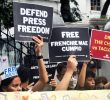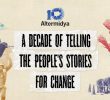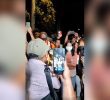By Rius Valle
November 20 is the anniversary of the United Nations Convention on the Rights of the Child (UNCRC), which mandates and obliges governments, including the Philippines to uphold children’s rights to survival, development, protection and participation.
Just recently we have seen schoolchildren marching on the streets protesting the unexpected burial of the late dictator Ferdinand Marcos at the Libingan ng mga Bayani.
Their participation sparked debates online – that of praises for the youth who showed that they were aware of the issue at hand; or that of criticism, especially to administrators, saying that these schoolchildren were manipulated.
We should take this experience in reflecting on the UNCRC and its intention to make children empowered, after all their right to participation is very well enshrined in this international instrument.
We always say the youth is the hope of the future, but what are the steps being taken to make this possible?
We have to know that children and the youth are capable of forming their thoughts even at such a young age, given that we are living at an age of information and challenges in schools who want to hone critical thinking among the young. Children are not passive beings. They absorb and even adapt to what the media, schools, and most importantly, what society teaches them.
In fact, many children are vulnerable with the many social ills today. There are around 5.5 million child laborers, 3 million of these are engaged in the worse and hazardous forms of child labor such as prostitution, mining and industrial work. Sexual abuse almost doubled in four years from 5,132 rape cases in 2010 to 9,875 in 2014.
Children of indigenous peoples in Mindanao or the Lumad are most vulnerable when soldiers and paramilitary launch their military operations and encamp in schools forcing their communities to evacuate.
During President Benigno “Noynoy” Aquino’s presidency from 2012 to 2016, there were 2,672 Lumad students in Mindanao whose schooling stopped after their community schools were closed due to militarization. The harassment continued even under the Duterte administration, even after a declaration of a unilateral ceasefire.
We must not underestimate the youth who has the capacity to understand their own experiences or their encounters with the marginalized. They should be commended if they step up and become the voice of their generation who question why many wrongdoings are happening in our present system.
Adults might think teaching the young to be critical might be risky. However, critical thinking is an effective tool to teach the youth to survive in this fast-changing world as they learn to fend for themselves and to address bigger issues that affect their communities.
For this, schools that enhance critical thinking and involvement are just making the right step to make our children and youth become enabled leaders in the future.
I commend the St. Scholastica College for leading and allowing their students to take part in expressing their stand against the Marcos burial. Likewise, schools here like the Assumption College of Davao among others, are commendable for making social awareness part of their curriculum.
I commend the Lumad schools in Mindanao, the Salugpungan Community Learning Center, MISFI Academy, ALCADEV and TRIFPSS in Caraga, CLANS in Sarangani and RMP Schools for nurturing the capacities of Lumad schoolchildren to become better leaders in their communities.
I call on all children and youth to continue to be critical, and prove those who underestimate you wrong. You have every right to speak your mind, and stand for your rights when other children cannot. Fight for your future, even if the adults around you are not, because it is very much yours to claim!
Salute to all children this children’s month!
–
Rius Valle is the advocacy officer of Children’s Rehabilitation Center and at the same time, spokesperson of Save Our Schools Network in southern Mindanao.





![[ANALYSIS] A different drug war](https://davaotoday.com/wp-content/uploads/2024/09/1000019103-110x100.png)




